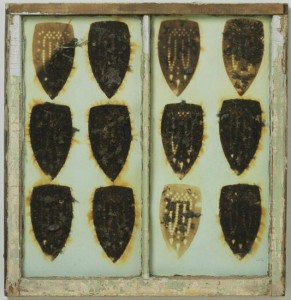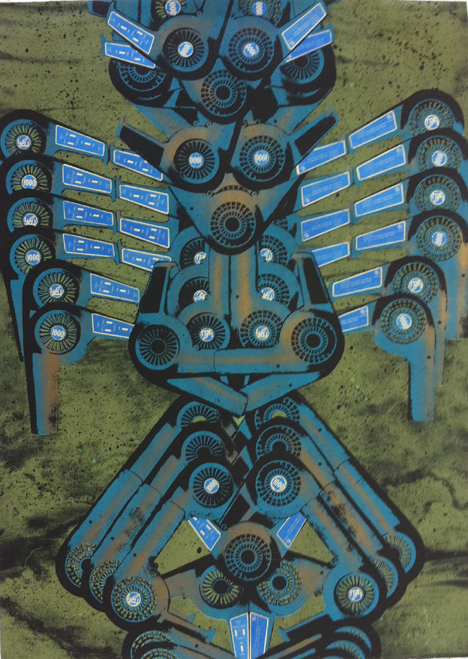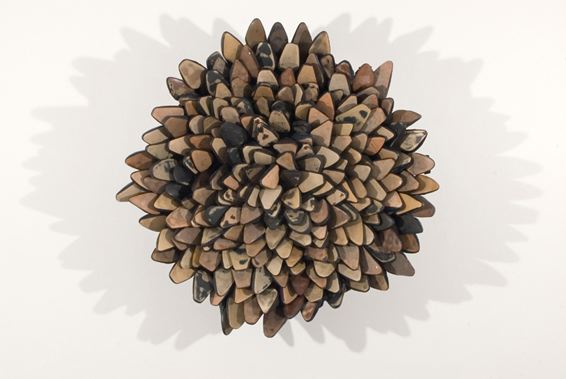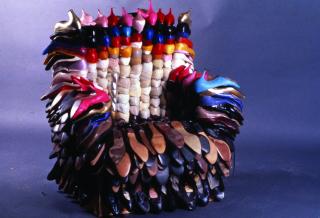
This work of Cole – ‘Reserved Evidence’, 1992 – is one of the works in ‘Represent: 200 years of African American Art’ in the Philadelphia Museum of Art. Opens January 10
About:
His artwork can be found in many private collections around the world and over 50 museums collections, including the Museum of Modern Art in New York City, the National Gallery of Art in Washington D.C., the Art Gallery of Ontario in Toronto and the FRAC-Lorraine in Metz, France.
 E21000TM, 1991.
E21000TM, 1991.
Cole was born in 1955 in New Jersey, where he still lives and works. He earned his bachelors of fine art at The School of Visual Arts in New York City in 1976 and creates much of his work by fusing the influence of Pop Art and traditional African art.
 Dirty Little Soles, 2005-2006.
Dirty Little Soles, 2005-2006.
Cole is well known for using ordinary household objects such as irons, ironing boards, high-heeled shoes, hair dryers, bicycle parts, wooden matches, lawn jockeys, and discarded appliances or hardware to create imaginative and powerful works of art. He has also created sculptures using gas pumps, plastic bottles, chairs, and even guitars. Cole has been referred to as an “urban archaeologist,” exploring universal and cultural concepts through these materials.
Sims is an independent art curator, writer, and consultant based in New York City. Since 1969 he worked successively at O.K. Harris Works of Art, the Whitney Museum of American Art, The Seattle Art Museum, The Museum of Modern Art, and was director of the Montclair Art Museum in New Jersey.
 Five Stances for Domestic Defence, 2013.
Five Stances for Domestic Defence, 2013.
“Complex Conversations: Willie Cole Sculptures and Wall Works’ spans thirty-five years of drawings, sculpture, paintings, and prints. It focuses upon the lively implications and interactions of the artist’s transformation of domestic consumer products, most typically steam irons (and their scorches) and, in this survey, ironing boards, high heel shoes, bicycle parts, gas station nozzles, and hair dryers. Examining how these objects and other related motifs shift, mix, and combine within his art, Cole deploys these consumer objects and appliances for their economic, social and spiritual content and meaning. While consumers prize what is novel and “unused,” Cole is drawn to well-used and unsalable things. Complex Conversations and its accompanying publication chart the ways Cole’s chosen objects, their depictions, and the media through which they are expressed interact to animate and connect his complex personal and worldview. Inflected through an urban African-American male experience, Cole’s art coheres socio-political protest and decorative symmetry, anger and love, and the personal and the cosmic within multiple cultures, religions, times, and places.”
Patterson Sims, Curator.
 Harlem Rose, 2005-2006.
Harlem Rose, 2005-2006.
 Made in the Philippines, 1993.
Made in the Philippines, 1993.
